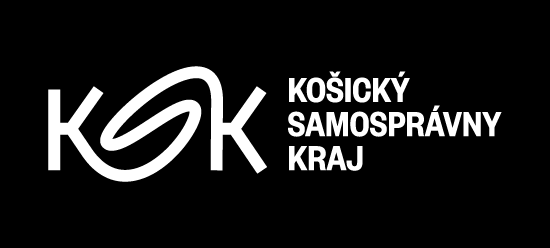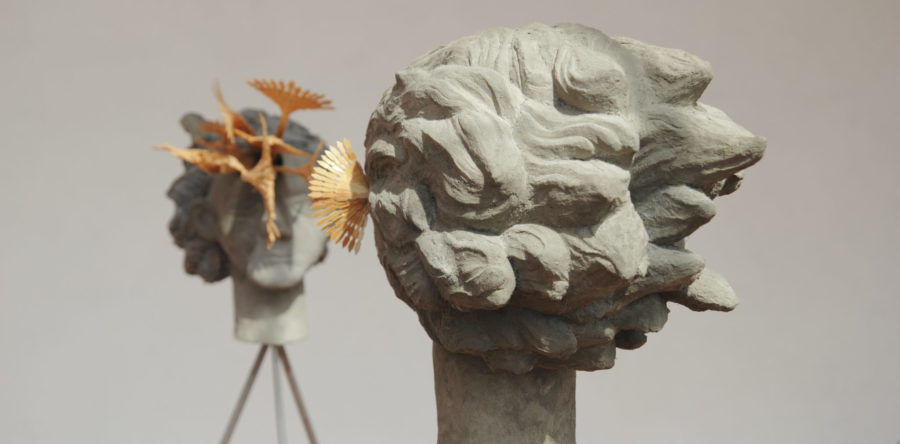opening: 7. 9. 2017 o 6 p.m.
duration: 8. 9. 2017. - 26. 11. 2017
curator: Michal Novotný
East Slovak Gallery, Hlavná 27
The natural world as an artistic problem. Thus, perhaps it would be possible, in a paraphrase of the famous book by Jan Patočka, to simply summarize the work of Anna Hulačová. It was, together with others, Patočka who convincingly showed that the human relationship with the world is not primarily wise, as Homo Sapiens proudly calls himself, and therefore not even reflexive in clearly separating us as self-conscious and the surrounding world as gray. matter shaped by reason, as we might see in certain interpretations in Descartes, the father of modern science, with its expansive quantitative nature, but rather a relationship of some closeness, of the primordial experience of the world in which we are at home, which we somehow understand in advance but it hurts and urges and to whose relationship the thought reflection is time-sequential, secondary.
While the entire artistic avant-garde movement, as primarily intellectual, with a focus on abstraction, might seem like the opposite of this immersion in the world, it would probably be a simplified statement. One only has to look at Malevich's or Guttfreund's late inclination to realism, to a certain civil and popular approach that has often been dismissed by so many theorists as ideological conformism, as opposed to previous "radical thinking." At the same time, it is rather a logical outcome of the initial interest in the folk and primitive, and the opening of a new path of modernity, which in its "re-definition of definitions", linguistic, intellectual operations seeking to bring them together, to the roots of artistic frameworks. painting, exhibition space, necessarily always a dead end in the end. Like an abstraction that simply simply does not go beyond a certain point, it can no longer abstract.
The uniqueness of Anna Hulačová's work then stems from a certain effort at reconciliation. It is not about rejecting modernist principles and returning to some previous stage of mythical folklore. Rather, to reconcile the figurative, the decorative, the civil, the loving and the folk with the path that figural art has, just as a certain natural expression of man's relationship to the world and the other, in a situation where he is so burdened by the history of religious and political ideologies that he did not completely lose and figuration did not become just an ordinary formalism. This includes Hulač's relationship to faith, to spirituality, mythology on the one hand, and to folk, folk, and rural, on the other, which has been so often mentioned in connection with her work. Here, too, it is important to repeat that Hulačová is not trying to go back, to find some lost authenticity of the golden age. In fact, she says that her closest gypsy spirituality is the moment. It is more a matter of rebirth something that has been forbidden for so long by previous dogmas, but not in terms of purist authentic purity, because it itself belongs to modernist ideologies, but as a kind of mutation if you want to be humanized, but from the body - the moment of complete technological present.
It is no coincidence that non-traditional, artificial and toxic materials often appear in Hulačová, but with a patina of a certain nature. That decorative cake-like decoration is made of silicone, that the civil, human, even socrealistic morphology is always shifted in a certain way, often in a kind of non-articulation. This, then, is another exact opposite of modernity, not the learned, refined pseudo-primitivity of a virtuoso drawing gesture, but on the contrary with strenuous incompetence, an effort to make something nice, even if we do not know it. Just as man's work is essential, his hands as instruments of transforming the world (but also spirituality in prayer), but also shovel, matter and warmth, so the decorativeness is close to him, even in its spiritual dimension of the image the universe as an Easter egg. Thus, his own emotions are forbidden for so many years in art as cheap and pathetic, closeness as a spiritual principle of love between mother and child, the face of the other as the essence of compassion.
The exhibition Genesis and Other Germ Plasmas further expands Hulač's formal morphology and thematic scale. There is more of a kind of exuberance, even exotic, shoots, palettes, tentacles, the twisting body of the snake and some kind of cell walls are again shifted, revascularized, solidified. At the same time, it brings another element of thematic art, technology, as if alien futuristic. However, it is more as if Anna's works themselves have mutated, as if new principles and species were emerging in this underground Ark, where we find older and new works. There is still an emphasis on the recontextualization of femininity as motherhood and female work as the creation of decorativeness, but it is also here to feel a certain slightly chilling mood of pain, especially in the work Plow and Sew, the existential clash of feminine and masculine principles, but also other motives of some kind. silent pain: in missing faces, vistas, cross-sections, Madonna with a missing child. However, it is an unpathetic pain, unpretentious, somewhat realistic, transformative, like a painful separation from the mother and a painful birth. Finally, the name connects biblical Genesis with germlasma - the genetic bank, and thus spirituality, culture, art - as a creation in its own image - with genetics as the materialization of mixing life, mutation as an evolutionary blind principle. Despite the breakthroughs and tears, despite the feeling of something new emerging, resisting, drifting, as well as the noise of Anna Hulačová's work, the color noisely permeated, there is still a feeling of a kind of deep softness.
Michal Novotný, curator
Anna Hulačová (1984, Sušice, Czech Republic) graduated from the Studio of Intermedia Creation II - Jiří Příhoda's school at the Academy of Fine Arts in Prague. In 2010, she completed an internship at the Korean National University of the Arts in Seoul, South Korea. She is an exceptional sculptor, whose work updates traditional crafts and translates into the language of contemporary art the inspiration found in ancient mythologies, Eastern cultures, but also in Czech folk traditions and original Christian symbolism. Predominantly figurative works embody a very special aesthetic on the border of ancient idols, Gothic woodcarving and the minimalism of graphic design and photography. Hulačová has presented her work in many renowned Czech exhibition institutions, such as the Prague National Gallery, the Prague MeetFactory and Hunt Kastner Artworks. In 2016, she was a finalist in the 27th Jindřich Chalupecký Award.



